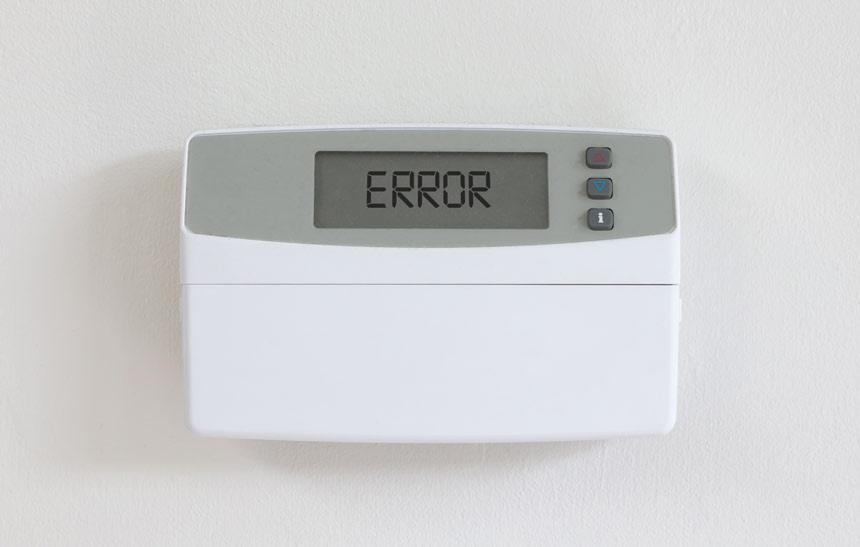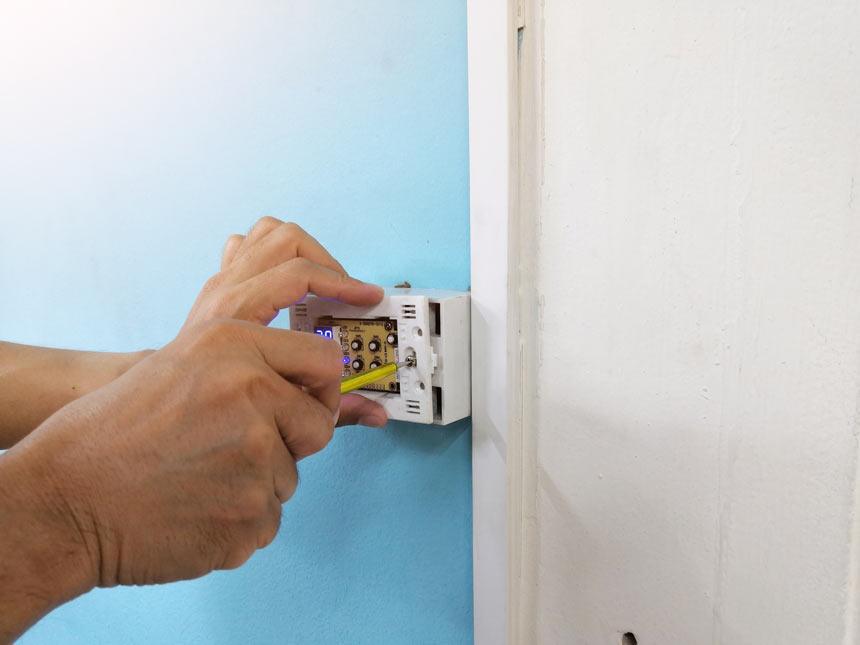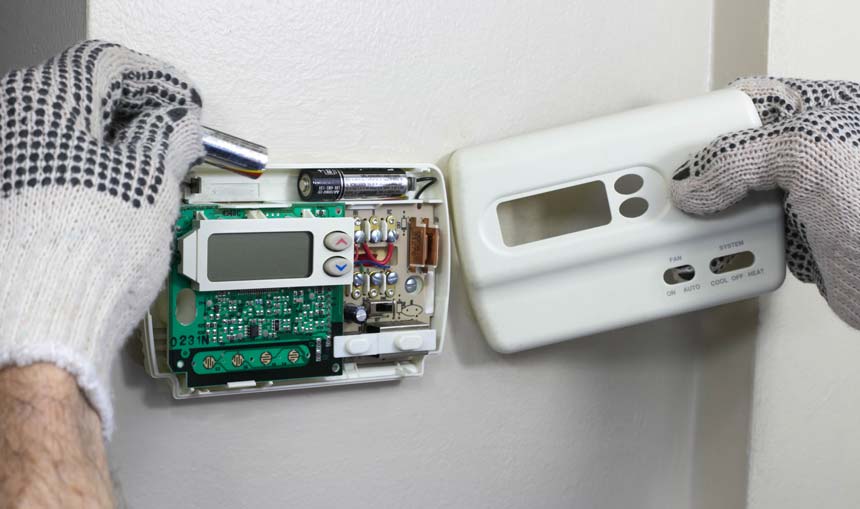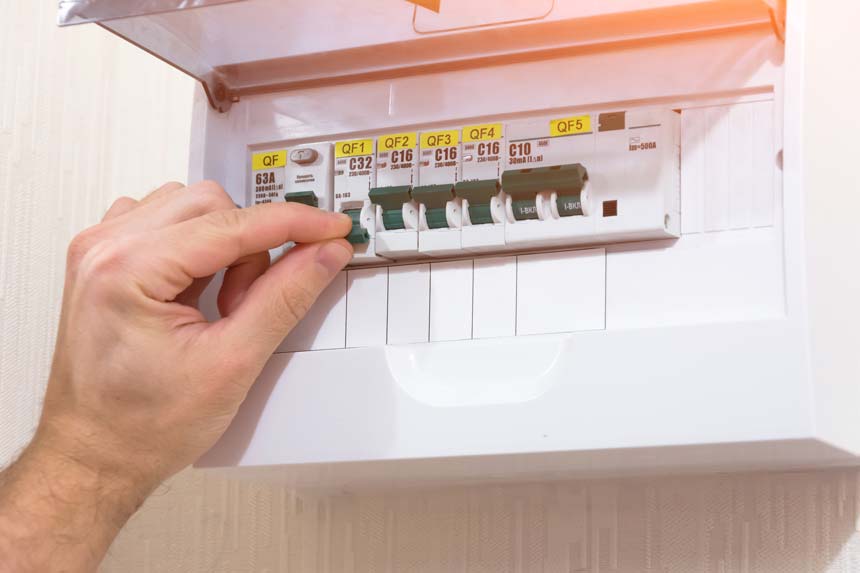If you have chosen this article to read, then you probably have some problems with your room thermostat not working. Having thermostat issues can be annoying. As they are used to monitor and control the temperature in our homes, when things go wrong with the thermostat, the heating or cooling system won’t work as it should. In this article, we will share some signs that your thermostat is damaged or broken as well as different possible faults of the thermostat. You will also find some helpful information on how to fix the issues.
How do I know if my room thermostat is broken?
Thermostats, which are complex components of every HVAC system, are vital pieces of equipment. They have an average lifespan of 10 years. After a decade, they may malfunction due to aging or other reasons. Keep the following signs in mind to find out if you have a broken room thermostat:
Your HVAC System Won’t Turn on:
Your heating and cooling equipment get controlled with your room thermostat. In fact, you should be able to turn it on from the thermostat. If you have some difficulties turning your air conditioner, heat pump, or furnace on, it could be a tell-tale sign of a thermostat not working.
Your air conditioner or heater runs non-stop
As mentioned before, thermostat controls the heating or cooling system. It is not only the main control for turning your heating and cooling equipment on, but also is the component that tells this equipment to turn itself back off. The room thermostat will alert your furnace or air conditioner to shut down after reaching the desired indoor temperature. If your heating or cooling system runs constantly and won’t turn off, it could be a sign that the wiring is frayed or the room thermostat needs to get calibrated.
Differing Temperature Readings throughout the Home:
As some people use multi-split air conditioners that allow them to cool rooms individually, dramatic differences in temperature and thermostat reading from one room to another can be a sign which shows your thermostat isn’t working.
Short-cycling:
Short-cycling happens when your HVAC system powers on and then quickly power itself back off. It works in a short burst of energy and fails to complete a heating or cooling cycle. So it doesn’t have an impact on the indoor environment. Inaccurate temperature readings or other malfunctions at the thermostat can lead to short cycling.
Programmed setting keep getting deleted:
Modern, programmable thermostats are designed to maintain settings over a long period of time with no troubles. If your thermostat keeps losing these settings and you need to reenter the programmed information, it indicates that your room thermostat has reached the end of its lifespan and there is a need to replace the thermostat.
There’s No Response to Changes in Temperature Settings:
When the indoor environment is overbearingly hot or too chilly, and you want a change in the room temperature by changing the temperature settings at your thermostat, your heater and air conditioner should instantly respond to changes in thermostat settings. If the system doesn’t work shortly after the changes, the room thermostat may need to get replaced.

Different defects and faults that the thermostat can have
Thermostat not reaching set temperature
If the room thermostat doesn’t reach the desired temperature, there may be some issues with sensors. As thermostat works with the help of multiple sensors. Broken or damaged sensors could result in a temperature reading that is higher or lower than what you initially set the thermostat in.
Having the thermostat placed in the right spot at home is also critical as they are what controls when your HVAC system operates. Wrong or inappropriate locations can lead to issues with the temperature reading. It should be ideally located no more than 5 feet from the door. If your thermostat is too close to a heat source such as sunlight or a fireplace, the temperature reading may be higher than the rest of the home. The same may apply to those located in a cold spot. The temperature reading may be far lower.
Over time, dust, dirt, and lint participles can go inside the thermostat unit, possibly blocking the sensors or causing other issues. That can result in an incorrect temperature reading.

The room temperature doesn’t match the thermostat setting
As mentioned, a dirty thermostat can have a significant impact on the temperature reading of your system. And it can cause a thermostat setting doesn’t match the room’s temperature. To solve this problem, remove the thermostat’s cover and wipe away any dirt or debris using a soft brush.
Corrosion that has taken place in your unit, may cause inappropriate working of the electrical components. Using an electronic contact cleaner can help you fix this problem.
Installing the thermostat is vital. If you want to install it yourself, make sure to wire it correctly. If the wires are loose and not tightly fixed to your thermostat, the installation is improper. Ask an expert to repair or replace it unless you have experience.
Thermostat won’t change temperature
Homeowners usually lock the digital thermostats to prevent others from making adjustments to the temperature. So if your room thermostat cannot change the temperature, check the lock feature and turn it off.
Changing the temperature manually is not possible when thermostats are in Auto mode. The unit always works based on the settings and programming you provided. If you want to adjust the temperature manually changing the Auto mode can help you.
On some occasions, the reason behind not changing the temperature of the thermostat is that it doesn’t work. Thermostat broken can happen due to aging units. There are also some other reasons to consider, such as losing wire or no power going to the room thermostat.
Troubleshooting thermostat not working and fixing
Most of the time, it is easy to diagnose and fix the thermostat issues. Even replacing broken or outmoded ones usually is not too difficult. But if you think you are not able to do it, don’t take a risk and ask local professionals for help.
If you have noticed the signs mentioned and decided to fix the issues, following these steps can help you:
· Check the screen:
make sure that the screen is lighted. A blank or unlighted screen can indicate a thermostat failure.
· Check the batteries:
as thermostats rely on battery power to operate, a battery change can solve the problem of an unlighted screen. After changing, recheck the function of your heating and cooling system.

· Check circuit breakers:
breakers on the HVAC equipment and at the main breaker box should be checked to make sure they haven’t tripped.

· Turn the temperature up or down 5 degrees:
try turning the thermostat’s setting up or down depending on the season. While turning the temperature up or down, you should hear a click. Doing that should start the unit. If not, check the service panel or fuse box for a tripped circuit breaker or a blown fuse.

